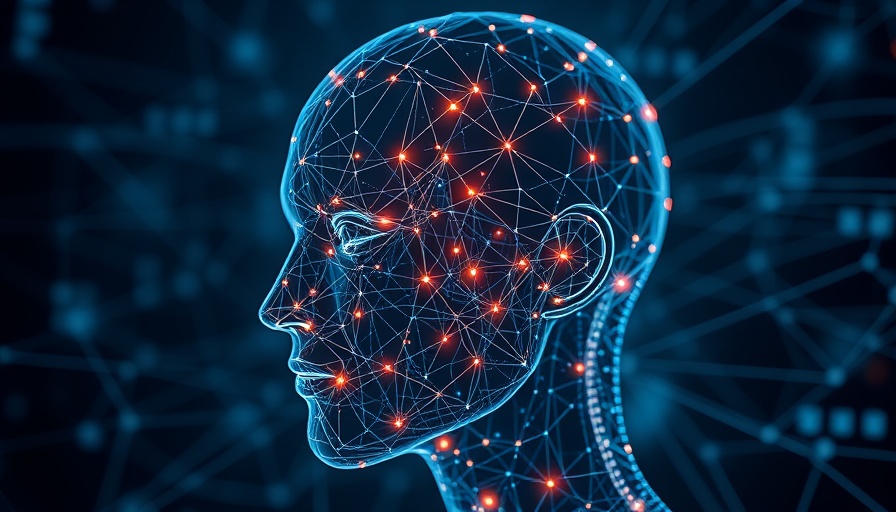
Exploring DeepSeek: The Next Big Leap in AI Technology
The AI landscape is buzzing with excitement over the recent developments surrounding DeepSeek, an emergent player in the realm of large language models (LLMs). As we gear up for what experts are calling a Cambrian explosion in AI, it is essential to contextualize DeepSeek's advancements—not as a disruptive transformation but rather as a logical step along an anticipated trajectory.
Understanding the DeepSeek Breakthrough
DeepSeek's architecture brings impressive efficiencies to the table, particularly through its Mixture of Experts (MoE) model, which activates only a fraction of its massive parameters at any given time. This innovation drastically reduces computational costs, enabling organizations to deploy advanced AI solutions without incurring substantial expenses. In an age where every dollar counts, this cost-effectiveness is a game changer for startups and small enterprises aiming to utilize cutting-edge technology.
Further emphasis should be placed on the shift towards open-source models, with DeepSeek championing this paradigm. In contrast to the closed systems favored by giants like OpenAI and Anthropic, covering the landscape exclusively under strict proprietary licenses, DeepSeek's commitment to open-source fosters collaborative innovation and paves the way for equitable access to AI tools. As highlighted by industry experts, this move signals a significant moment where open-source AI can no longer be regarded as merely an academic endeavor, but a viable, scalable player in commercial markets.
The Implications of Open-Source Adoption
The release of DeepSeek's open-source reasoning model, R1, marks a pivotal development in the AI community. Seena Rejal, CCO of AI startup NetMind, argues that DeepSeek demonstrates the practical capabilities of open-source AI, proving that models can rival proprietary systems. This position aligns with Meta's Yann LeCun's assertion that the success of open-source models can challenge established norms within the industry.
Moreover, the decision to make its model freely available opens up a dialogue concerning data ownership and ethical usage. With organizations increasingly concerned about data privacy, DeepSeek's self-hosting capabilities provide a straightforward solution—allowing companies to keep sensitive information away from third-party oversight. This aspect makes DeepSeek an attractive option for industries where confidentiality is paramount.
Technical Innovations Redefining the AI Landscape
DeepSeek isn't just a player in the field; its innovations have positioned it front and center in discussions about the future of AI. The model doesn't merely excel in computational efficiency; it also integrates reinforcement learning to refine chain-of-thought reasoning processes, marking another layer of depth in how AI models operate. Multi-token training further enhances its capabilities, indicating the increasing complexity and sophistication of contemporary LLMs.
These advancements unfold amidst a broader historical context of technological evolution. Just as high-end graphics have transitioned from requiring supercomputers to functioning on smartphones, AI is experiencing a similar transformation. The rapid advancement of DeepSeek exemplifies this shift, featuring improvements not just for industry titans but accessible to creators and innovators of all scales.
Risks and Challenges: A Double-Edged Sword
However, the shift towards open-source technology is not without its challenges. Experts have noted that open-source models may be more vulnerable to cyber exploitation. While the democratization of AI presents numerous benefits, it simultaneously opens up phrasings to misuse, including concerns over data oversharing and safety flaws highlighted in recent cybersecurity reports.
Future Prospects: Bridging the Gap to General Intelligence?
As the conversation around DeepSeek evolves, so too do predictions concerning its place within the larger context of artificial general intelligence (AGI). While some are eager to claim that new players in the field signal the approaching singularity, the general consensus is that DeepSeek is creating efficiencies that, while impressive, do not equate to a revolutionary leap towards AGI.
Instead, experts suggest we view this moment as a natural step along a path where each iteration brings us closer to comprehensive understanding in AI, rather than a definitive transformation.
Conclusion: Embracing Open Source and Innovation
In summary, as we stand on the cusp of a revolution in AI brought forth by DeepSeek and similar models, it is imperative to recognize both the opportunities and obstacles they present. Open-source models are set to redefine accessibility in AI, allowing for unprecedented innovation while simultaneously demanding a vigilant approach to safety and ethics. For businesses, developers, and AI enthusiasts alike, staying ahead of these trends is crucial to navigating the rapidly changing landscape of artificial intelligence.
 Add Row
Add Row  Add
Add 




 Add Row
Add Row  Add
Add 

Write A Comment